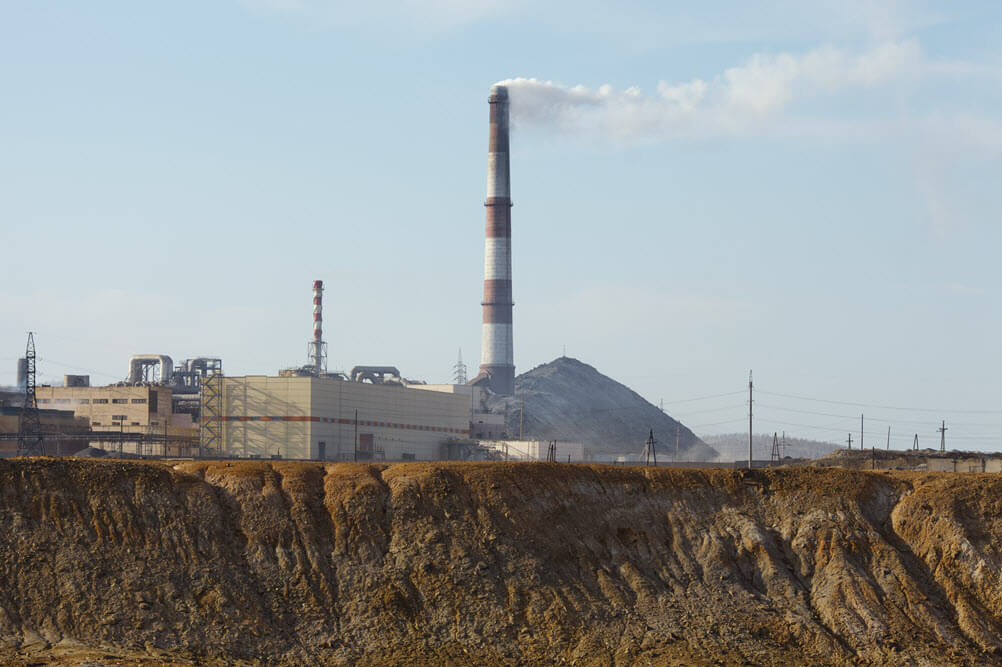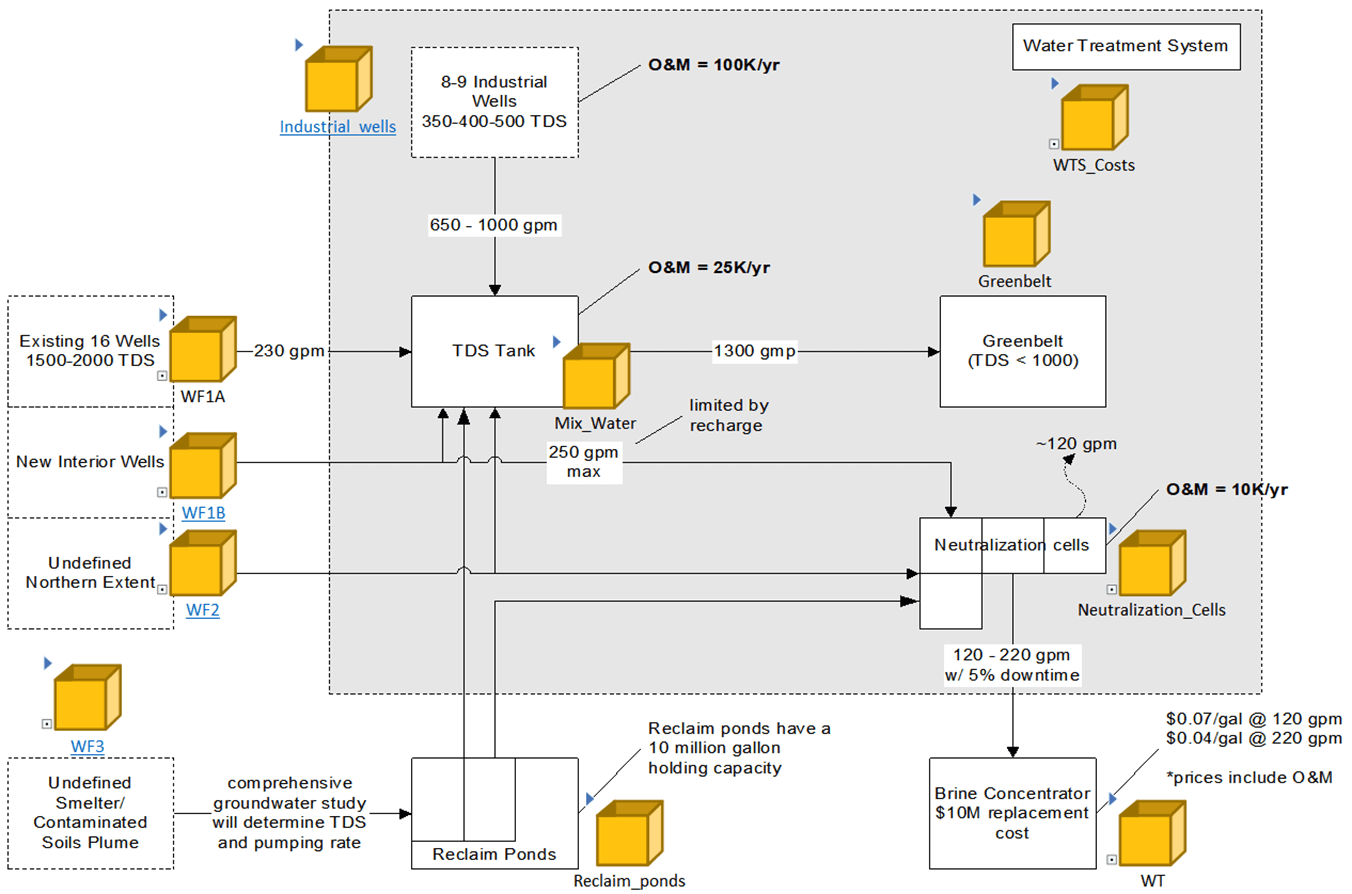Evaluation of Alternative Closure Strategies For a Smelter Site

The objective of this study was to compare the performance metrics of alternative closure actions for a smelter site and determine the environmental and financial impacts for each of the alternatives. Uncertainty about the closure activities (e.g., start times) and the system conditions (e.g., TDS concentrations in the groundwater plume, depth and aerial extent of soil contamination) were explicitly represented in the model.
The model included a climate model that simulated rainfall and evaporation based on historical data for the site. The model tracked all capital and operating costs associated with the closure activities, including maintenance and replacement costs.
The simulation of the baseline closure plan indicated that groundwater interceptor wells would exceed the capacity of the passive water treatment system (dilution and evaporation) and require a brine concentrator to be operated at times. An alternative plan was developed that involved diluting additional water and constructing a pipeline to transport the water during the summer months to a nearby ranch for agricultural use. The volume of water diverted from the evaporation ponds was sufficient to eliminate the need for the brine concentrator, saving an estimated $20 million over the projected duration of the closure activities.

